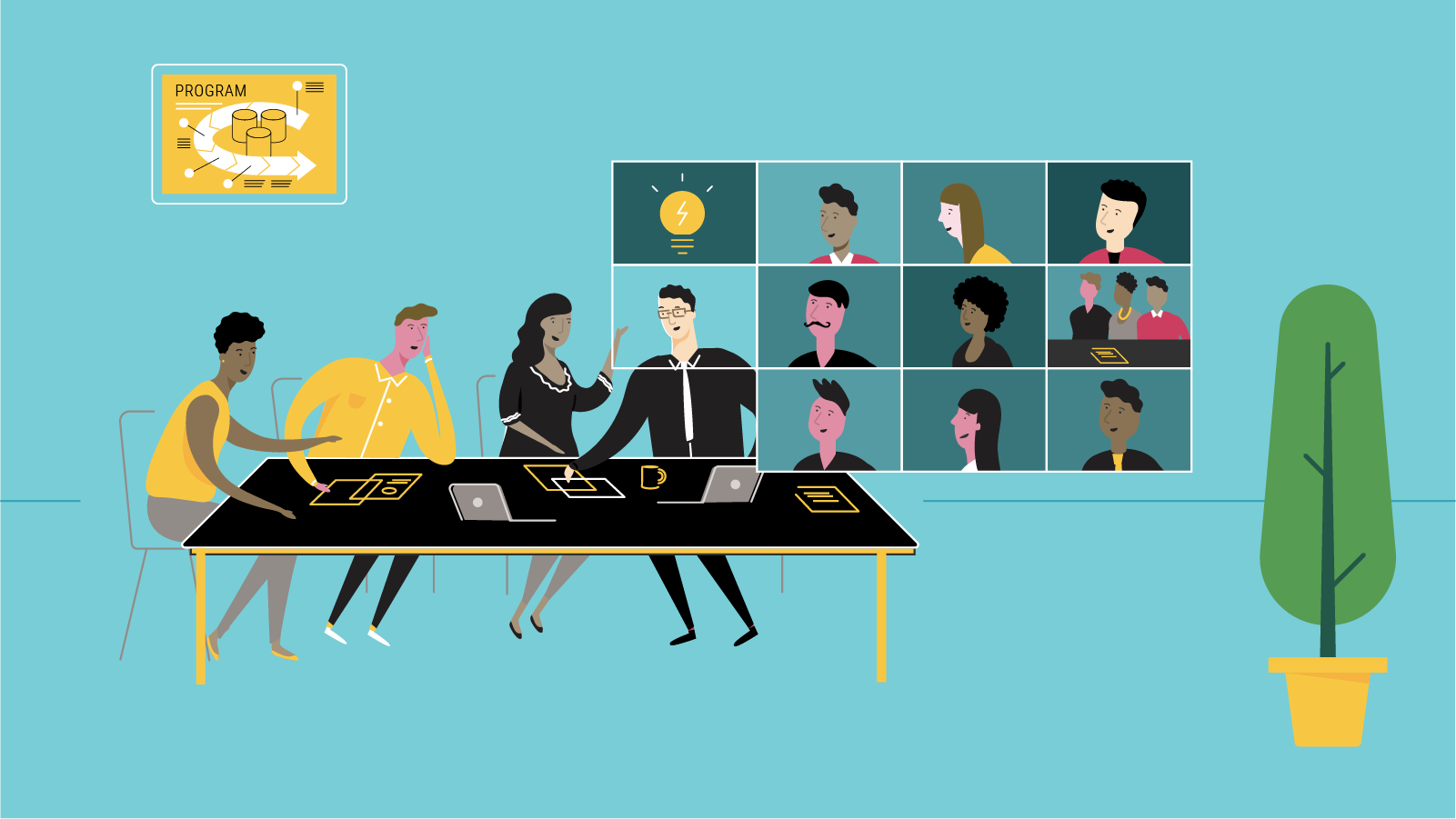NOTE: This post is a recap of XPLANE’s Grow a Thriving Workplace, Virtually webinar. Watch it for more information on this topic.
Working remotely is not a new subject, but it has catapulted into the spotlight in recent months.
At the end of 2019, many companies were experimenting with a hybrid workplace—a mix of physical places and online spaces. But the pandemic changed everything, pushing the needle toward virtual work.
While many people are enjoying the “new normal,” they are also mourning the loss of the physical work environment.
What Happened to Culture?
Before the pandemic, a leader’s main challenge was to strategically balance the cost and flexibility benefits of a remote worker world with the cultural, psychological, and management benefits of a physical space.
What many people didn’t talk about then, though, was the hybrid environment’s silent impact on company culture.
These last few months have taught us a lot about what works and what doesn’t in an all remote, all the time world. People are mourning the loss of culture.
In recent interviews exploring the effects of remote work on culture, XPLANE heard many concerns:
“After a Zoom call ends, I immediately feel lonely.”
“We moved to this new way of working so fast that all physical reminders of my company—like swag, posters, and even the kitchen—are gone.”
“I need a reason to have a conversation with someone now. Before, I used to just walk by their desk.”
“Workdays are never ending because I never leave home.”
We also learned that people miss rituals. Something as simple as walking to the kitchen in the morning to grab a cup of coffee or going for drinks after work are important workday touchstones.
Planning for the Future
As we slowly move back to the physical workplace, we know the old ways of working are probably never going to be the same.
Leadership might not be tackling culture and workspace issues right now, but these will be company critical in the long run.
To help you prepare for the future we know is coming, XPLANE developed the Future Work Environment Planner, a set of tools that help you:
- Determine how you work best in your environment
- Identify what makes your culture unique
- Conduct user experience research on yourself, your team, and beyond
- Check critical mindsets and actions needed for this new reality
Workplaces Enhance Engagement
Why is future work environment planning so important?
In 2013, furniture design company Steelcase conducted research to help organizations build flexible workplaces that could handle the concurrent environments of brick-and-mortar office spaces and online virtual workspaces.
Over four years, Steelcase surveyed about 30,000 folks, measuring employee satisfaction, mobility, and collaboration. Their research yielded a telling snapshot of what workers need and expect from the workplace—from basics (natural light, air quality) to access (different ways to work, collaborate, and get information).
The upshot? Employees who felt their workplace basics were done right and who had access to people and technology were three times more likely to feel their workplace helped them be engaged.
The Pillars of Growth
If you think of the workplace as a living organism, what keeps it alive is the symbiotic give-and-take between leadership, employees, and the organizational environment.
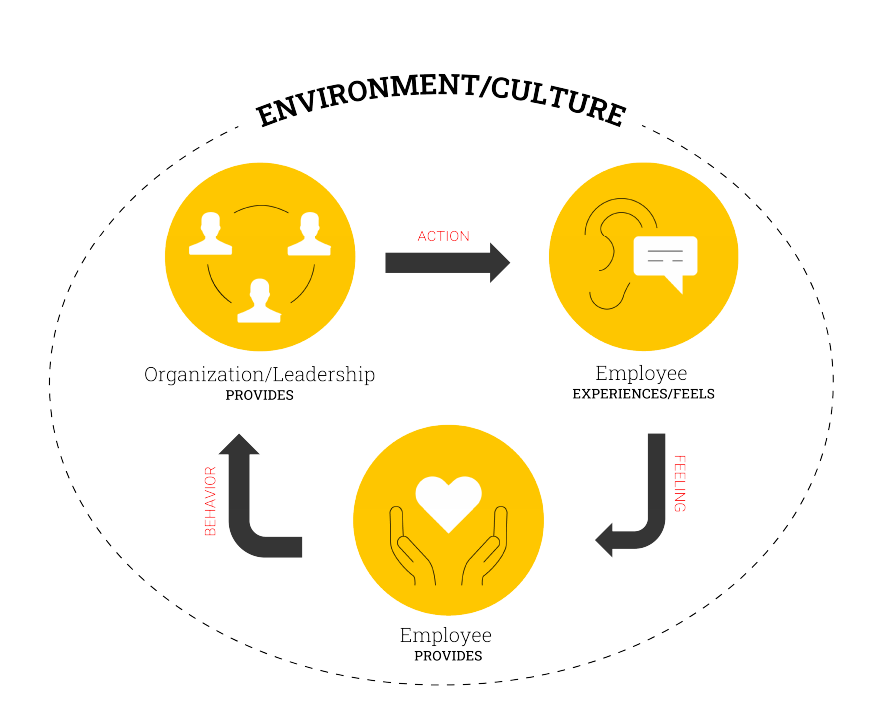
Each positive action from leadership or the organization creates a multi-level psychological then physical response from the employee, which then circles back to the organization.

When an environment changes, however, we must make changes to keep that organism healthy.
It’s then that we lean on the four pillars of a growth culture:
- a flexible, connected, and motivational workplace
- a focused purpose, inspiring vision, and resilient plan
- clear, transparent communication
- intrapreneurial experimentation
The Future Work Environment Planner
In simplest terms, XPLANE’s Future Work Environment Planner helps you keep your organization healthy.
Planning involves three steps.
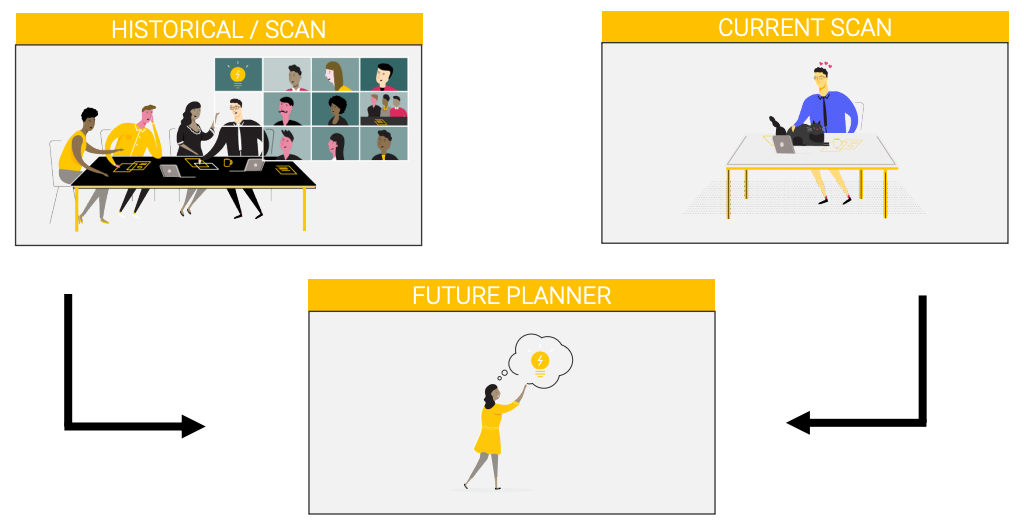
Step 1: Conduct a historical environmental scan. In this step, you look at your former work environment (using the 9 to 5 Spaces worksheet) and important rituals (using the Cultural Signs and Touchstones worksheet), exploring questions such as:
- How did you work and balance the rest of your life during the week?
- What cultural signs and touchstones connected you to your organization?
- What space did you use to make both come alive?
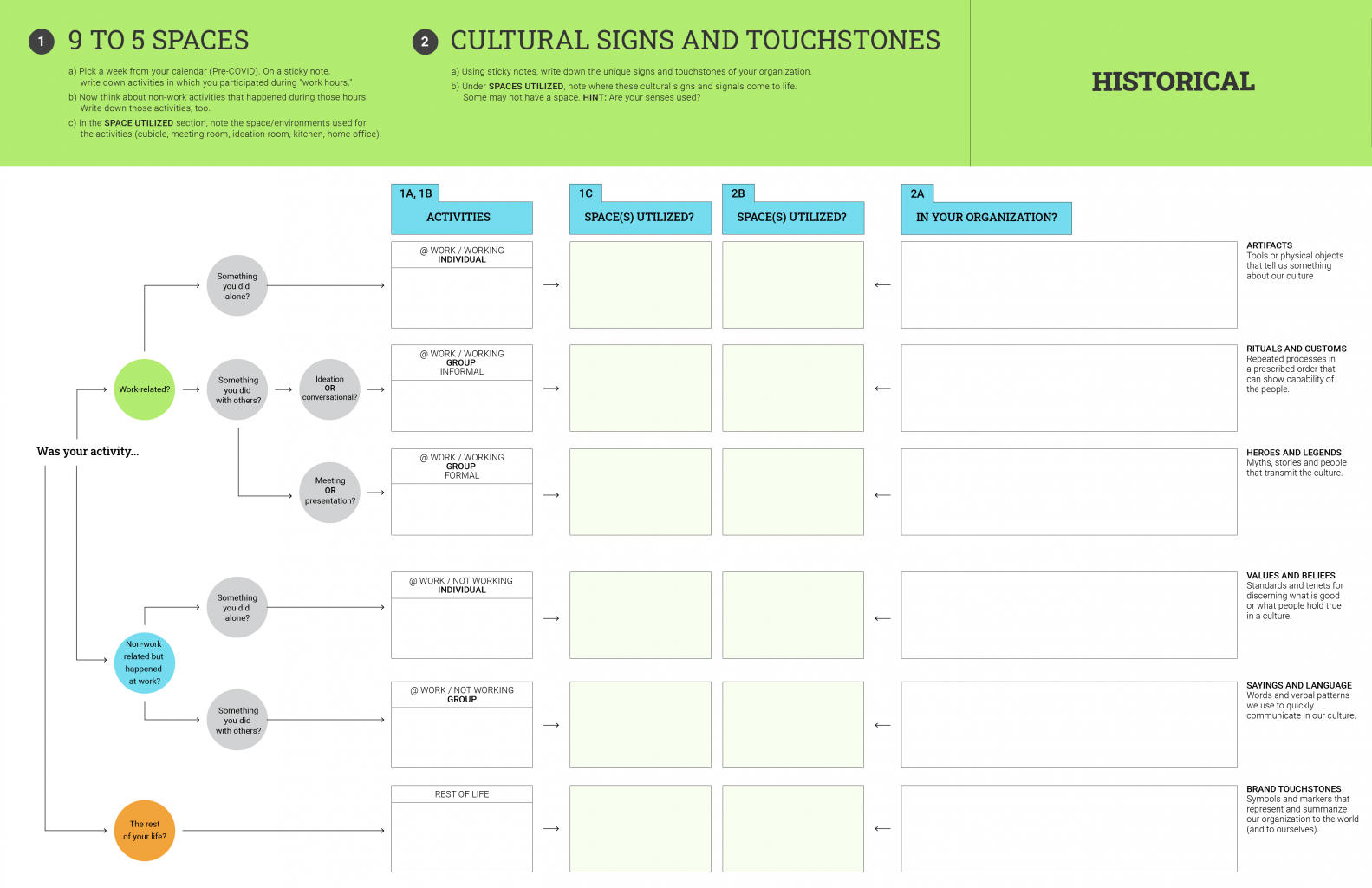
Step 2: Assess the current way you work in your environment. In this step, using the “Here and Now” Work Environment worksheet, you identify how you’re using today’s limited spaces for work as well as for the rest of life. This step prepares you to become a virtual space planner.
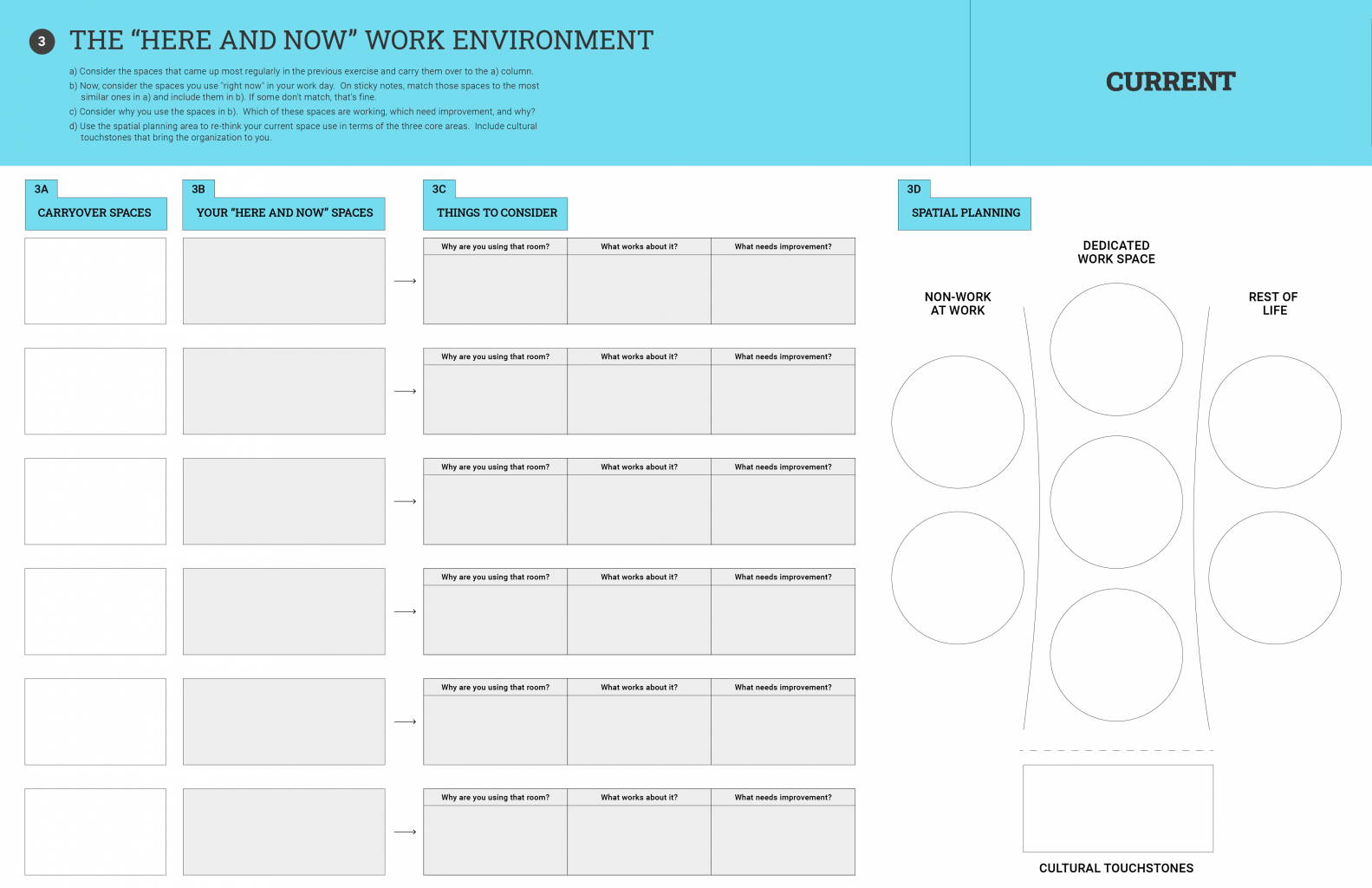
Step 3: Plan your future environment. Using the Hybrid Future Field Notes and Planner, and drawing on your work from Steps 1 and 2, you’ll think about changes you have made in this new environment that are better suited for your future environment.
You’ll then determine which spaces, past and present, you use most and want to carry into the future and which cultural touchstones are important to bring forward. This work will help you pivot to a more positive mindset and get you started on planning your perfect future hybrid space.
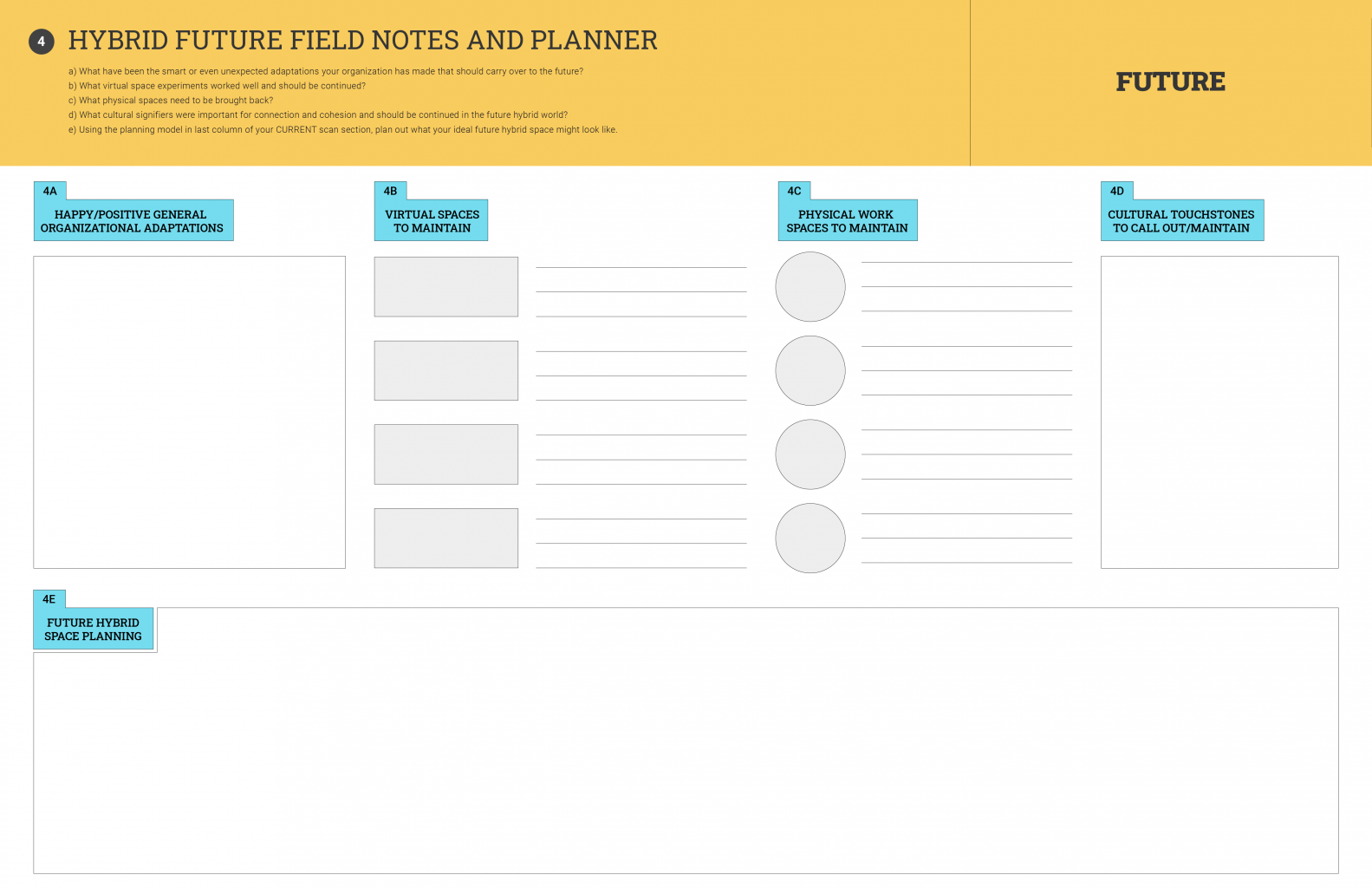
Translating Your Ideas Into the Workplace
To bring some of these ideas into your current or future physical space, you can:
- Determine which spaces you still need. Do you need a huddle room? Individual workstations? A kitchen? A break room? A running trail or walking path? Answering these questions helps you be aware of how you work, who you work with, and where you work, along with other parts of your day.
- Think about how you use your spaces. Why do you use them? What works and what needs improvement? For instance, have you gone from working on two monitors to one? From an air-conditioned office to a stuffy room?
- Start to plan your ideal space. Think about how you break up your day and how you use your time to do non-work tasks.
Thinking spatially about how you use current spaces may sound simple, but how you separate your workday is helpful in feeling connected to past work.
And starting to plan your new workspace will help you feel productive and intrapreneurial.
Preparing for the New Work Environment
A number of mindsets and actions can help you and others think positively about your new future work environment.
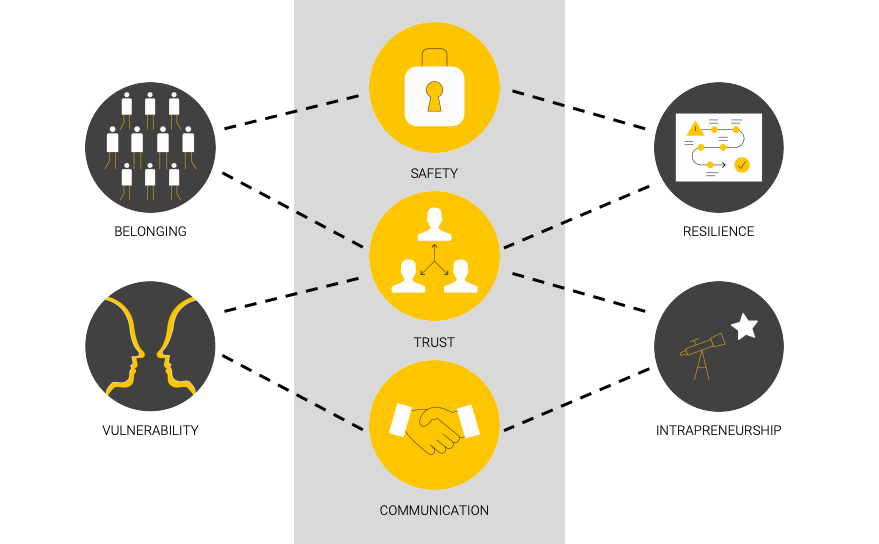
- Create a sense of belonging for employees. How can you make employees feel connected to the bigger organization?
- Show vulnerability. How can you bring the human side forward in this new work environment? How can you share struggles and still convey that you’re doing your best?
- Model resilience. Future work environment planning is a great example of showing resilience.
- Demonstrate intrapreneurship. How do you provide tools for employees to solve challenges themselves remotely? How can you help employees think about and be conscious of their workspaces to create something that actually works for them instead of just getting by?
Great Workplaces Inspire Great Work
Future environment work planning is a long but critical process in design thinking a new work environment.
When an organization takes time to plan—providing a flexible, connected, and motivational workplace—employees experience community, belonging, and inspiration.
It’s then that we bring our best selves to work—whether online or in the office.
_________
If you have questions or thoughts about any of the worksheets mentioned in this post, please reach out. We welcome your feedback!
